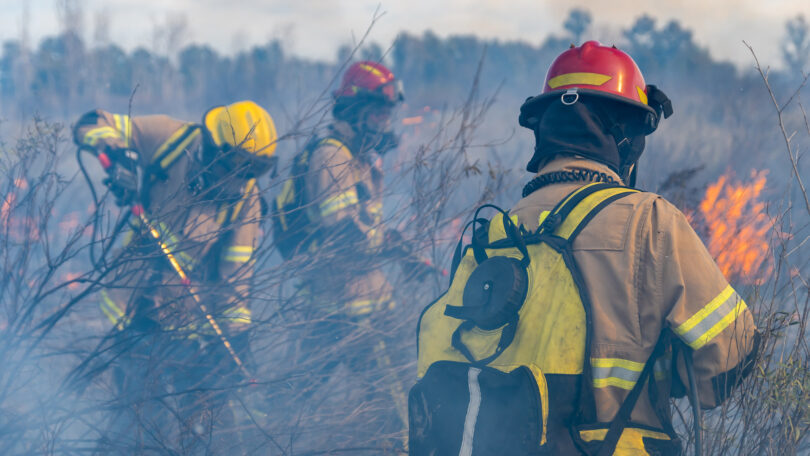When a wildfire threatens your local community, it is often your neighbors who are the ones you turn to for help, both during a crisis, and also when it’s safe to clean up and rebuild.
It is important to ensure you have a neighborhood to rely on before, during, and in the aftermath of a wildfire.
These are some of the ways you can turn to Nextdoor to build a local support system in your community in the event of a wildfire or severe weather crisis.
And, as always, listen to local officials. If you’re in danger or need emergency services, call 911.
How to use Nextdoor during a wildfire
Below are tips on how to use Nextdoor to share and find local information, ask for or offer to help evacuate neighbors during wildfires, and find shelter information.
- When looking for and sharing information on Nextdoor, include and search for hashtags such as #roadclosure #evacuate #shelter.
- Remember that some of your neighbors may need a ride to evacuate; knock on their doors and post to Nextdoor to ask for or offer a ride.
- Repost messages you find helpful to increase visibility.
- For the best experience, use the Nextdoor app or install it if it is not on your phone.
- To find trusted information from public agencies, go to https://nextdoor.com/agency/feed.
- Invite your neighbors to join Nextdoor to create more resilient neighborhoods in times of crisis.
How to get assistance using Nextdoor and GoFundMe
Did the wildfires impact you, and do you need financial assistance, or do you want to help neighbors in need?
Nextdoor has partnered with GoFundMe to help.
1. If you were impacted and need financial support:
You can launch a fundraiser on GoFundMe. It’s free to start a fundraiser on GoFundMe.
2. To help neighbors in need:
GoFundMe launched a centralized hub housing all verified fundraisers.
Spread awareness by sharing your neighbor’s GoFundMe link across social media, including on Nextdoor. Click “Share,” then “Repost,” to get the word out to your neighbors.
GoFundMe is designed to deliver the most money to the people and causes that need them. That’s why GoFundMe doesn’t charge fundraiser organizers fees to set up or run a fundraiser on its platform. Donors can leave a 100% voluntary tip for GoFundMe to maintain their robust and trusted fundraising tools, new ways to donate, customer support, and a global team of Trust & Safety experts.
3. Protecting the community:
At GoFundMe, being a safe and trusted place to give and receive help is their top priority.
To help keep their platform safe, donations are processed by GoFundMe’s payment partners, held, and then released only to the person named as the recipient of the funds (the beneficiary). Before funds are transferred to the beneficiary, their personal information must be verified. If any questions arise, GoFundMe processors will hold the funds until the recipient is verified.
GoFundMe has a team of experts working around the clock to review fundraisers and prevent misuse. During humanitarian disasters and other crises, GoFundMe’s team proactively monitors and verifies fundraisers so the communities impacted can receive the quick and trusted support they need. For a fundraiser to be considered verified, it must go through an enhanced due diligence review process. This process includes both a robust human review from GoFundMe’s world-class Trust & Safety experts as well as technical tools designed to catch misuse.
GoFundMe also has the first and only donor protection guarantee in the crowdfunding industry. Through the GoFundMe Giving Guarantee, GoFundMe guarantees donors a full refund in the rare case something isn’t right. You can learn more about GoFundMe’s Trust & Safety practices on their safety hub, as well as find tips that can be shared with your audiences.
Tips for neighborhood cleanup after a wildfire or natural disaster
If you’re cleaning up following a wildfire or severe weather event, please follow these safety tips to stay safe.
- Get the right safety gear:
- Hard hats
- Goggles
- N95 masks (or a respirator with a higher protection level)
- Heavy work gloves
- Waterproof boots with steel toe and insole (not just steel shank)
- Earplugs or protective headphones (if you’re working with noisy equipment)
- At least two fire extinguishers (each with a UL rating of at least 10A)
2. If sewage is involved, make sure to wear the following during your cleanup:
- Rubber boots
- Rubber gloves
- Goggles
3. Use teams to move heavy bulky objects:
- Have teams of at least two people work together to move heavy or bulky objects.
- Avoid lifting any material that weighs more than 50 pounds (per person).
4. Pace yourself. Cleaning up your home can be a big job. Be sure to take care of yourself:
- Rest when you need to.
- Decide which cleanup tasks are most important, and focus on those first. That way, you’re less likely to be overwhelmed.
- Try to work with other people so you aren’t alone.
- Get support from family members, friends, counselors, or therapists.
5. Take precautions when using a chainsaw:
- When using a chainsaw, always follow the manufacturer’s instructions. Make sure to wear appropriate protective gear, and be sure that bystanders are a safe distance away.
- Avoid contact with power lines, and take extra care in cutting trees or branches bent or caught under something else.
- Use extreme caution to avoid electrical shock when using an electric chainsaw.
6. Stay safe in hot weather:
- In hot weather, try to stay cool by staying in air-conditioned buildings, taking breaks in shaded areas or cool rooms, drinking water and nonalcoholic fluids often, and wearing light and loose-fitting clothing.
- Do outdoor activities during cooler hours.
- For more information on protecting yourself against heat-related illness, see the CDC Extreme Heat website.
To connect with your local neighborhood, download the app or login at nextdoor.com.

